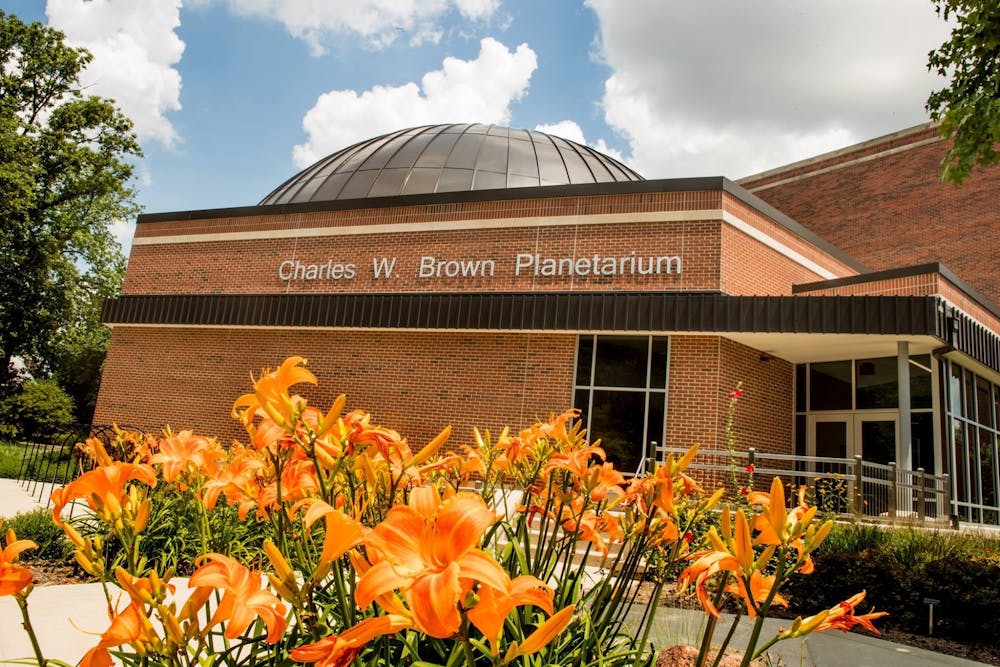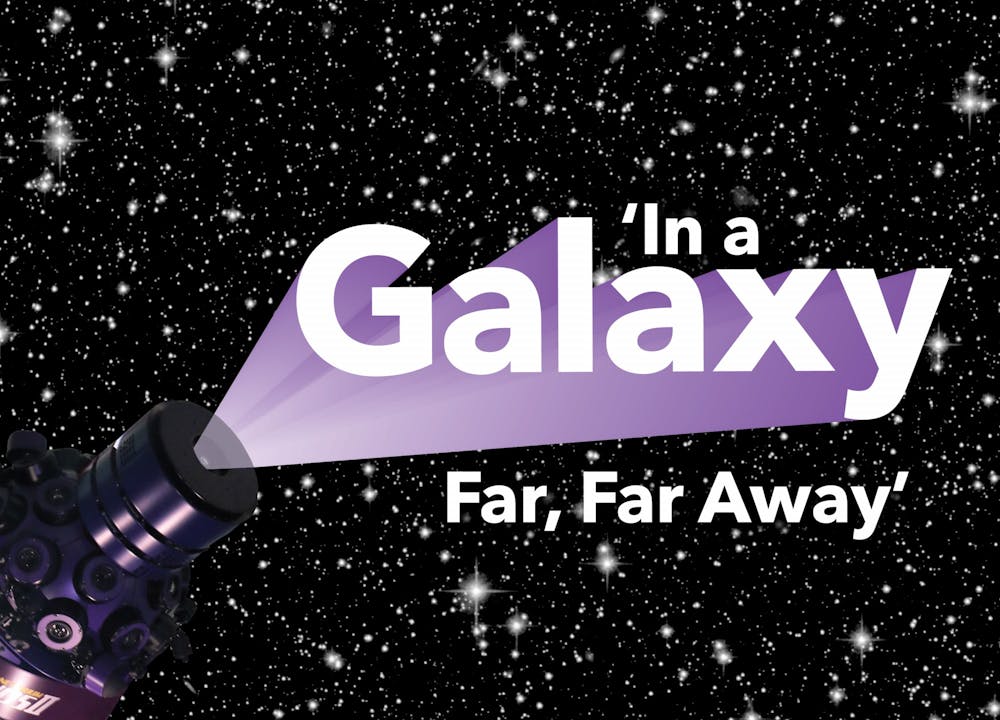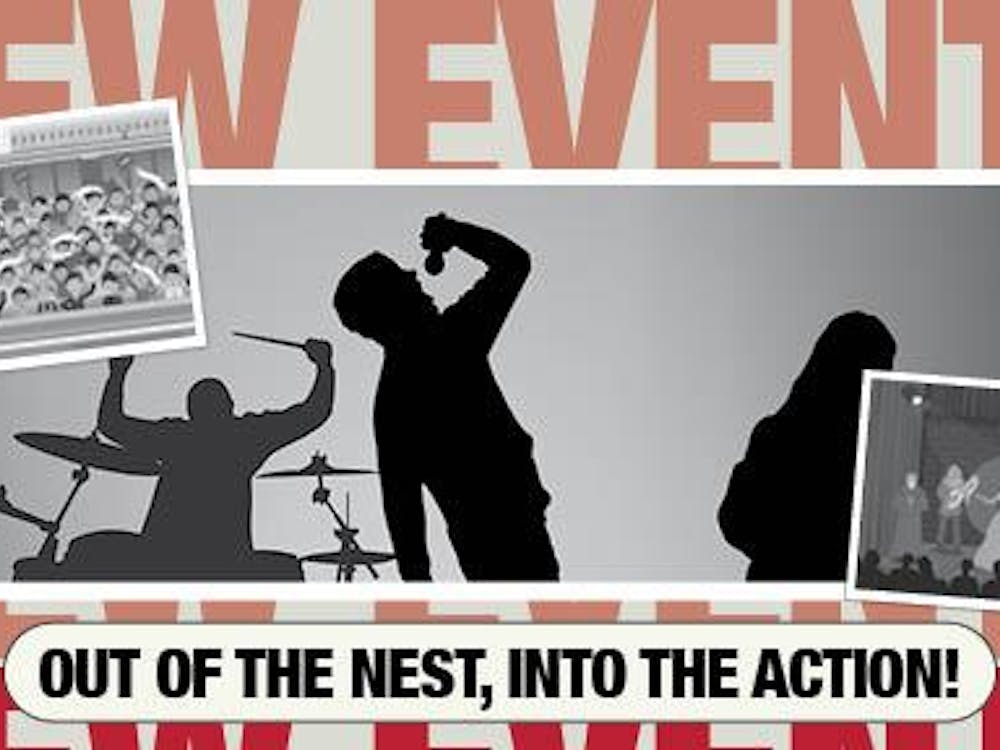The reason Ball State's first Astronomy Slam survived COVID-19: a trophy.
Planetarium Director Dayna Thompson already had the Astronomy Slam for 2020 planned out when the pandemic hit. Instead of having it in the Charles W. Brown Planetarium as expected, YouTube was their backup location.
"I was like okay, we have to do it," Thompson said. "I bought the trophy."
This year, the third annual Astronomy Slam will be held at Ball State's Charles W. Brown Planetarium on Nov. 5 at 6:30 p.m. This year is the first year since the pandemic that the planetarium has been able to seat at full capacity of 152 people.
Thompson said the Astronomy Slam consists of four students using the planetarium to present an astronomical topic they are passionate about, with only 10 minutes to explain their ideas.
“I wanted to have a public event that was really student centered and gave students time to shine in the planetarium because we had such talented students here …,” Thompson said. “They could be really presenting in some special ways to the public that we weren't kind of giving them a chance to do.”
Astronomy Slam relies on audience participation. Each attendee is given an event brochure with a QR code on it, and at the end of the program, they will be able to use it to vote for which presentation they think was best.
Though there are four presenters, only one is crowned the Astronomy Slam champion. Thompson said they want to acknowledge all the students’ hard work, so all participants receive some type of award.
The 90-minute event is open to all ages and tickets cost $4, with food and light refreshments included. They can be found on the Charles W. Brown Planetarium’s website.
Thompson said the event has something for everyone. She said it’s something adults can go to for date night, but it is also something families can enjoy.
This year, the presenters include two graduate students and two undergraduate students: Caleb Whitcomb, Madeline Shepley, Kyree Standifer and Kenya Cole, respectively. Thompson said the only requirement is a passion for astronomy, so all majors are welcome to apply.

Topics for this year include a tour of the night sky, the scale of the universe, the life cycle of stars and searching for another earth. Thompson said students are given complete free-range as far as their creativity.
“They come up with these amazing ideas and outlines, and I’m like, ‘I would have never done that,’ and I love it because it gives me more inspiration for what I do,” Thompson said. “... the students actually bring some new light to what we do for our typical public programs and what they are able to offer in the Astronomy Slam.”
Thompson said the planetarium has already used ideas inspired by Astronomy Slam in their other shows. In 2021, Shepley, second-year physics grad student, discussed galaxies outside of the Milky Way.
They were only visible in a very dark sky, so she showed the difference in visibility at night when the moon is apparent versus when it’s not by “turning off the moon.” Though the planetarium had used a similar feature before, Shepley’s take is something the planetarium implemented into their public programs.
Melanie Isenbarger, the winner of the first Astronomy Slam, is now the show specialist for the planetarium and has helped with this year’s Astronomy Slam. Isenbarger won with her topic, “The Sound of Science.”
“It was really a good experience, especially in the middle of the pandemic,” Isenbarger said. “It was a good way to kind of stay connected to our community and have them engage with us without being here in person, and it was the first one, so it was kind of a cool learning experience seeing it come together.”
This year, Shepley is presenting on constellation warping and the scale of the universe. This is her second year participating in the Astronomy Slam; last year, she presented on dwarf galaxies.
Shepley, along with her competitors this year, works at the Charles W. Brown Planetarium. She helps run demonstrations and has been preparing for the next solar eclipse in April 2024.
“Working at the planetarium, I've come to realize what an awesome resource we have at Ball State in the planetarium,” Shepley said. “It's the largest planetarium in Indiana, and … in Indiana, it's the best one that I've been to, and we're really lucky to have it.”
Contact Lila Fierek with comments at lkfierek@bsu.edu or on Twitter @fierek_lila.





